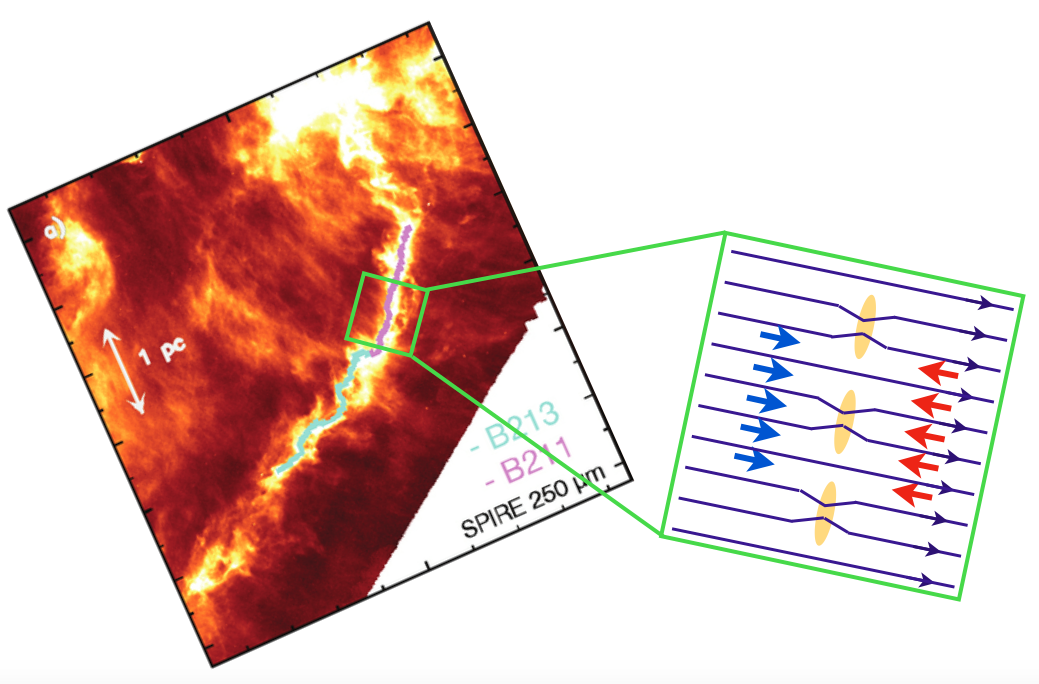Daily Image
07-11-2019Colloquium: The formation of (very) slowly rotating stars
| Submitter: | Henk Spruit (MPA, Garching) |
| Description: | The image (Herschel) shows a filament in a star forming region in Taurus. The sketch shows the configuration of the magnetic field around the filament (purple), the flow field towards the filament (arrows), and star forming clumps in the filament (yellow). The talk discusses how the stars born in such clumps can rotate with a (very) large range of periods. All stars rotate, but at rates that vary by orders of magnitude even among otherwise identical stars. The most extreme cases in particular may tell us something new about the process by which stars form. I'll start with an introduction of the kinds of stars and their rotation rates, followed by a reminder of two classical problems in star formation: the prospective star somehow has to lose almost all the angular momentum, and almost all the magnetic flux it inherited from its birth cloud. The existence of very slowly rotating stars is an extreme manifestation of this problem. After ticking off other proposed explanations, I'll argue that the answer must lie in the star forming process itself. Some fraction of protostars may manage to maintain a connection with their birth cloud, at a weak yet sufficient level to result in rotation periods of decades to centuries. Some recent numerical simulations show hints of this process in action. |
| Copyright: | Henk Spruit (MPA, Garching) |
| Tweet |  |
